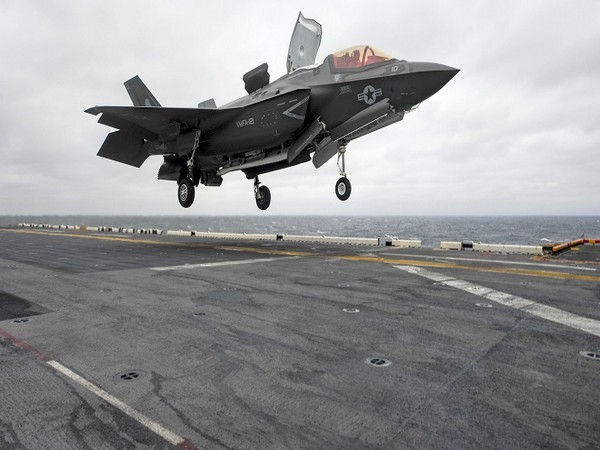WASHINGTON: At least seven persons were injured in a US F-35 jet crash on the deck of the USS Carl Vinson aircraft carrier in the South China Sea.
The US Pacific Fleet said in a statement Monday that the pilot of a US F-35 jet was conducting routine flight operations when the crash happened. However, he was safely ejected and was recovered by a military helicopter and he is in stable condition, reported CNN.
Six others were injured on the deck of the carrier. Three required evacuations to a medical facility in Manila, Philippines, where they are in stable condition, according to Pacific Fleet. The other three sailors were treated on the carrier and have been released.
The cause of what the statement called an “inflight mishap” is under investigation, reported CNN.
A spokesman for the Navy’s 7th Fleet in Japan, Lt Mark Langford, said Tuesday the impact to the Vinson’s flight deck was “superficial” and the warship and its air wing had resumed normal operations.
As for the F-35, “the status of the recovery is in progress,” Langford said. The crash is the first for an F-35C, the US Navy’s variant of the single-engine stealth fighter, designed for operations off aircraft carriers.
The F-35A, flown by the Air Force, takes off and lands on conventional runways, and the F-35B, the Marine Corps version, is a short-takeoff vertical landing aircraft that can operate off the Navy’s amphibious assault ships, reported CNN.
Versions of the F-35 are also flown by US allies and partners, including Japan, South Korea, the United Kingdom, Australia, Italy, Norway, the Netherlands and Israel. More countries have orders in for the jet.
Monday’s crash in the South China Sea was the second of an F-35 this year. On January 4, the pilot of a South Korean F-35 made an emergency “belly landing” at an airbase on Tuesday after its landing gear malfunctioned due to electronic issues, according to the South Korean Air Force.
In previous years, F-35s have been involved in at least eight other incidents, according to records kept by the crowd-sourced website F-16.net, reported CNN. The 1.3 million-square-mile South China Sea has been the site of frequent naval activity in the past several years as China has asserted its claims over almost all of the area by building up and militarizing islands and reefs.
The US military asserts its right to operate freely in what are international waters. Carrier deployments like the current one exercise those rights. The two strike groups along with a Japanese helicopter destroyer staged a large exercise on Saturday in the Philippine Sea, the part of the Pacific Ocean between Taiwan and the US island territories of Guam and the Northern Mariana Islands.
A day after that exercise, China sent 39 warplanes into Taiwan’s self-declared air defense identification zone, the largest such incursion of Chinese warplanes into that zone this year. (ANI)









Comment